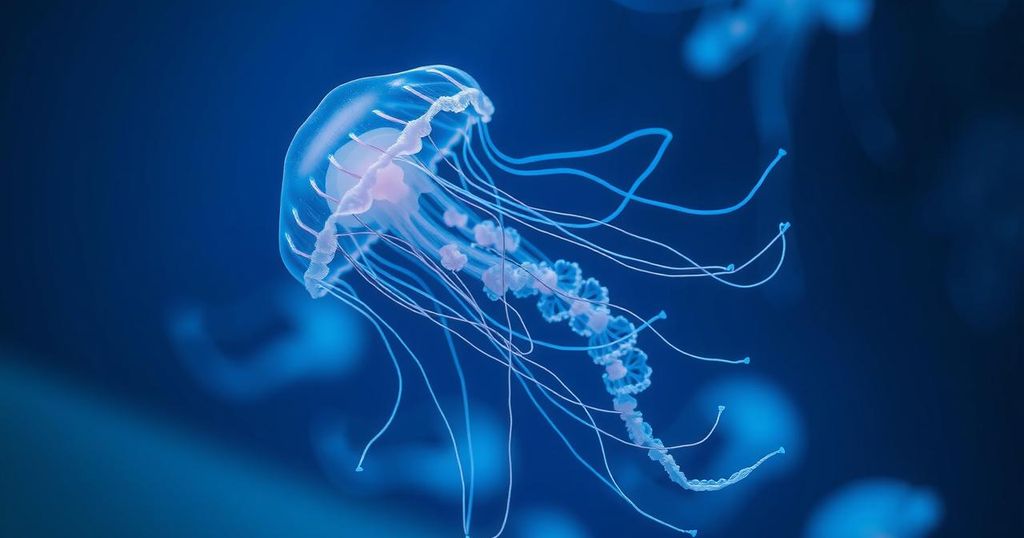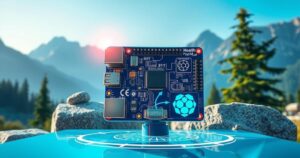Merging AI and Underwater Photography to Reveal Hidden Ocean Worlds
A new project from MIT Sea Grant, LOBSTgER merges AI and underwater photography to document and visualize the changing ecosystems in the Gulf of Maine. Co-led by Keith Ellenbogen and Andreas Mentzelopoulos, the initiative seeks to improve public understanding of marine biodiversity while employing advanced generative models trained on Ellenbogen’s extensive photographic work.
In the Gulf of Maine, one of the world’s richest marine ecosystems, scientists are witnessing rapid environmental changes that threaten its delicate balance. Home to whales, sharks, jellyfish, and more, the region is warming faster than 99% of the planet’s oceans. In response, a new initiative has emerged from MIT Sea Grant called LOBSTgER, short for Learning Oceanic Bioecological Systems Through Generative Representations.
This innovative project combines artificial intelligence with underwater photography to document vulnerable ocean life. Spearheaded by underwater photographer Keith Ellenbogen and mechanical engineering PhD student Andreas Mentzelopoulos, LOBSTgER aims to push the boundaries of scientific storytelling. The mission is to share the beauty and complexity of the ocean with the public through new visual formats.
As cameras in the 19th century revolutionized our perception of nature, generative AI is now charting uncharted territory in visual storytelling. It challenges traditional views of authenticity while enhancing the dialogue between art and science. The LOBSTgER project takes Ellenbogen’s stunning underwater photographs as its foundation, utilizing them to train models that ensure ecological accuracy and artistic representation.
These generative models are grounded in a carefully curated library of Ellenbogen’s work, which includes intricately captured images steeped in both technical expertise and artistic flair. By ensuring high-quality data, the project hopes to convey accurate representations of marine life amidst ongoing environmental shifts. Special coding by Mentzelopoulos fortifies the process against biases found in external models, keeping the outputs reliable yet creative.
Working at the confluence of art, science, and technology, LOBSTgER stands out as a unique blend of observation and innovation. The team believes this project can redefine how we portray environmental stories. By focusing on marine biodiversity not just as a research subject, but as a potential catalyst for public engagement, LOBSTgER exemplifies MIT’s dedication to interdisciplinary approaches.
Undersea photography is a tough task in New England, plagued by issues like limited visibility and erratic marine movements. Ellenbogen, over the years, has forged ahead despite these obstacles to compile a substantial visual archive of the region’s aquatic life. This dataset is crucial in training the generative AI models that will enrich the storytelling process demonstrably.
LOBSTgER’s diffusion models not only replicate underwater life but also mimic Ellenbogen’s artistic touches. Trained on thousands of real images, the models learn to depict the subtleties of light, color, and texture that define the underwater world. The result? A seamless blend of visual truth and artistic depth—images that invite viewers into an immersive experience.
The AI will allow Ellenbogen to recover lost details in murky waters, improve lighting, or even recreate scenes that are otherwise unobtainable. This hybrid approach could help photographers and researchers alike in curating their narratives of underwater stories more effectively.
In one of the project’s highlight series, Ellenbogen documented stunning high-resolution photographs of vibrant marine creatures like lion’s mane jellyfish and ocean sunfish. “Getting a high-quality dataset is not easy,” Ellenbogen states, reflecting on the laborious but rewarding effort of underwater exploration. Various conditions can lead to missed opportunities in capturing the essence of marine wildlife.
Mentzelopoulos’s creation of original code to facilitate the training of the models is no simple task. It involves a complex blend of technical knowledge and painstaking computational work, showcasing the dedication required to meld art and technology together.
The vision behind LOBSTgER is not to replace traditional photography but to enhance it, blurring the lines between visible reality and creative potential. “The goal is to help people see environmental complexity in ways that resonate emotionally and intellectually,” Mentzelopoulos explains. The hope is that this initiative not only reveals hidden ocean worlds but also inspires action.
As LOBSTgER continues to grow, the team is set on a path to expand its model to visualize even more species found within the Gulf of Maine and beyond. This project presents photography and generative AI as complementary tools, melding documentation with imaginative extension. They believe this union can significantly enhance how science communicates through imagery in a time when ecological awareness is more crucial than ever.
In a climate where ecosystems are evolving dramatically, effective visualization enables engagement and conservation efforts. The LOBSTgER project is still young, but the anticipation for future discoveries and insights keeps rising as the work unfolds.
In summary, the LOBSTgER initiative is weaving together art, science, and tech to reimagine marine documentation in the Gulf of Maine. By harnessing generative AI alongside underwater photography, the project not only captures the breadth of marine biodiversity but also enhances public understanding and emotional connection to the ocean. As ocean ecosystems face rapid change, this innovative approach stands to play a pivotal role in environmental storytelling and conservation efforts moving forward.
Original Source: news.mit.edu




